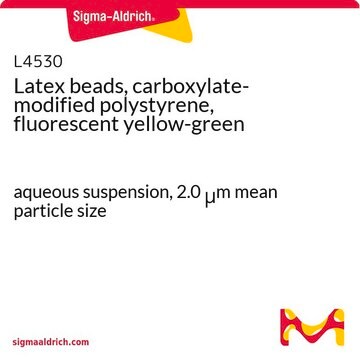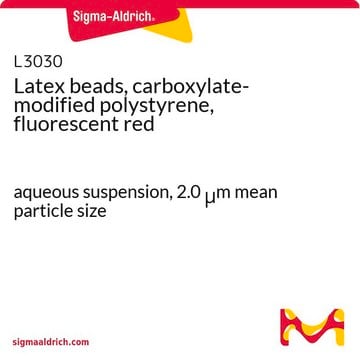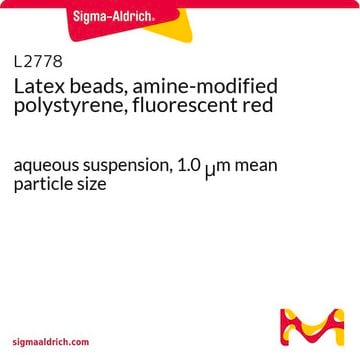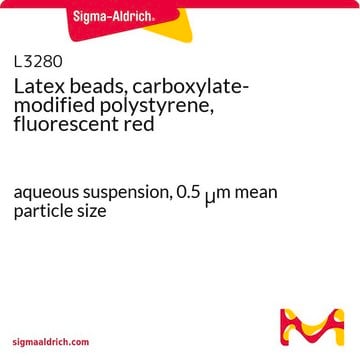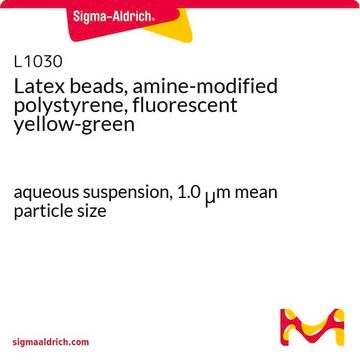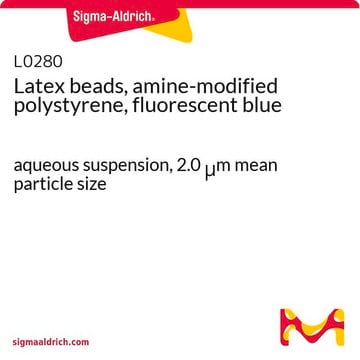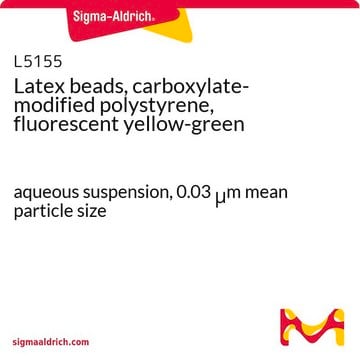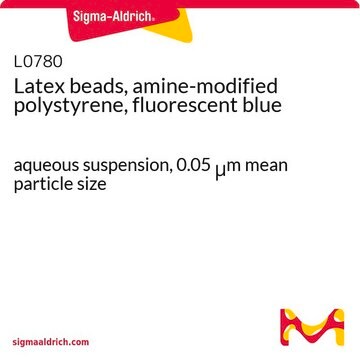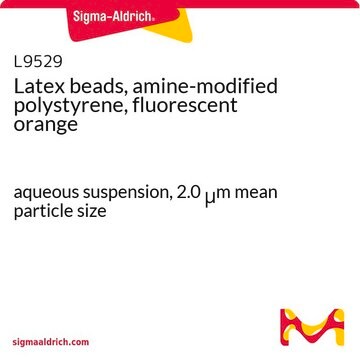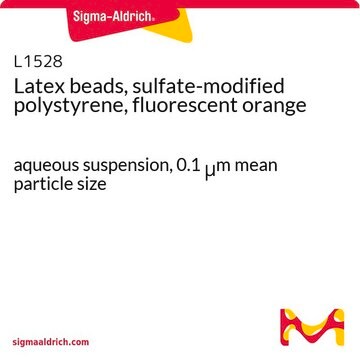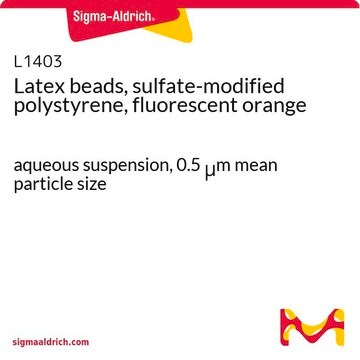The concentration of the Latex Beads is approximately 4.75x10^10 beads/mL.
推荐产品
儲存類別代碼
10 - Combustible liquids
水污染物質分類(WGK)
WGK 3
閃點(°F)
Not applicable
閃點(°C)
Not applicable
其他客户在看
-
What is the concentration of product L4655?
1 answer-
Helpful?
-
-
What are the ingredients of the solution in which the plastic is diluted? Can I dilute it in PBS?
1 answer-
This product is prepared in water containing a prioprietary anionic surfactant and >0.1% Sodium Azide. Phosphate Buffered Saline is a suitable diluent.
Helpful?
-
-
Are there latex beads recommended for phagocytosis, and if so, what size is recommended?
1 answer-
There is no performance testing of latex beads for phagocytosis. Information found indicates that internally, there are no specific protocols or recommendations for a phagocytosis method using the listed latex beads. However, references to literature where the products have been used in research are provided. The maximum excitation and emission for one of the latex bead products, L3280, are also mentioned. Additionally, three products (catalog numbers 59769, 43302, and 89904) were found on the company website, with variations in bead size and fluorescence. For more details, you may refer to the provided links and Knowledge Article 000007596.
Helpful?
-
-
What are the differences between carboxylate-modified polystyrene and amine-modified polystyrene Latex beads, and which type of beads is suitable for phagocytosis applications?
1 answer-
When selecting beads for phagocytosis assays, there are three key parameters to consider: the size of the bead, the color of the bead (dyed or undyed), and the modification of the bead (carboxylate, amine, or sulfate modified).
Beads chosen for phagocytosis experiments typically range from approximately 0.5 to 3 micrometers in size. A 1:250 dilution of the beads into the culture medium is commonly used for phagocytosis experiments. Latex Beads, 2 um (Product No. L0905), can be utilized for phagocytosis assays, as macrophages can phagocytose particles larger than 2 um.
Fluorescent latex beads are available with different fluorescent dyes incorporated into the beads. The yellow-green beads are commonly used for phagocytosis studies and are compatible with most flow cytometers and fluorescent microscopes.
For phagocytosis applications, the choice of bead modification (carboxylate vs. amine) depends on the specific assay being conducted. Carboxylate-modified beads, with a negative charge, mimic the uptake of apoptotic cells, while amine-modified beads, with a positive charge, are used to mimic the uptake of opsonized cells.
Helpful?
-
-
What is the recommended storage temperature?
1 answer-
This product may be stored at room temperature. For products with no specified storage temperature given on the label or product page, ambient storage may be assumed. Products that require controlled temperature storage, such as refrigeration or freezer conditions, storage temperatures are published on the product label, Certificate of Analysis, the Safety Data Sheet (SDS).
Helpful?
-
Active Filters
我们的科学家团队拥有各种研究领域经验,包括生命科学、材料科学、化学合成、色谱、分析及许多其他领域.
联系技术服务部门